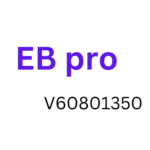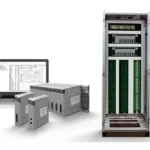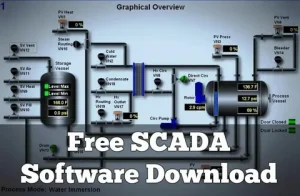Direct use of renewable energy such as wind and solar energy is not as efficient unless we store it for later use. Of course, we can do this with storage batteries such as deep cycles (lead-acid, lithium-ion batteries, etc.). Keep in mind that the battery only stores direct current instead of alternating current.
In this post, we will show you how to find out the appropriate size of battery bank capacity in Ah (Ampere hours) and also the required number of batteries according to our needs. Keep in mind that batteries are always rated in Ah. If you are not comfortable with manual calculations, you can use the battery size calculator right after the solved example for battery size calculations.
Related Posts:
How to determine the appropriate inverter size for home appliances?
How to calculate the correct size of a solar charge controller?

Step 1 – Energy Demand
First you will need to calculate the total amount of load in watts that is needed to run directly or later on the storage energy in the batteries. If it is a home, you can easily get annual energy consumption data from your energy meter or electricity bill.
If it is based on an RV mobile or boat etc you will need to add and calculate the wattage of all the required appliances. (See example below).
The following table shows the typical power consumption of various household appliances. In our example, the total required load is 900W.
Step 2 – Number of days of autonomy:
This is the number of days you can use the storage power of deep cycle batteries without charging them. In other words, the number of days without charging the batteries (mostly under cloudy skies). You can find the latest data from weather forecast sources or the state weather department about average sunshine and estimated cloud cover for specific areas.
Keep in mind that if the number of days of autonomy increases, you will need to add more batteries, even more power sources such as portable generators, etc. In our example, the number of days of autonomy is 2 days.
Step 3 – Battery System DC Voltage
This is the nominal DC voltage of the battery (generally 12V, 24V, 36V, 48V, 72V, etc.). Although a 12V system is more common, you can use a 24V or 48V system for solar panel installation systems depending on your system configuration requirements. In our example we used 12V DC batteries.
A motor-generator set is used to isolate the electrical load from the power line. It is also used to change the supply frequency or voltage. It is also used to eliminate spikes and fluctuations in industrial power. A motor-generator set is used to convert one type of electrical energy into another type of electrical energy. It cannot be used to generate electricity.
A motor-generator set consists of different types of motor and generator combined into one unit. In most cases, the motor is driven by the input electrical energy from the commutator and the output of the generator coils is used for the desired applications.
Principle of operation of the M-G set
A typical motor-generator wiring diagram is shown in the figure below.

Here two electric machines are connected on the same shaft. Out of these two machines, electrical power is provided to machine-1. So machine-1 behaves like a motor and starts rotating when we give electrical input.
Since the motor runs at rated speed, the mechanical energy produced by the motor is used to rotate machine-2. So machine-2 behaves like a generator. The generator acts as a motor load.
Now the mechanical energy produced by the engine is again converted into electrical energy by machine-2. Machine-2 is chosen according to the application where we will use electrical energy.
Conclusion
Here we have seen both machines in separate units. But for a small set, the motor-generator can be located on a common unit. The input of this assembly is electrical energy and the output of this assembly is also electrical energy. However, in some cases, the type of electricity we have is not suitable for our load. In that case, we can use the motor-generator set to obtain electrical energy suitable for our load using the motor-generator set.
Let’s say we have DC power. But the load needs alternating current to operate efficiently. In this condition, we can use a motor-generator set that includes a DC motor and an AC generator. The available DC power is supplied to a DC motor which is a co-shaft pair with the AC generator. As the DC motor rotates, the AC generator rotates and generates alternating current. (Nowadays, this application is easily done using inverters. But before the power electronics revolution, this type of arrangement was used to convert direct current to alternating current.)

For the second example, we have alternating current with a frequency of 50 Hz. The load we have is effectively running at 60 Hz. In this state, we will use both the AC motor and the generator. But the motor is designed for 50 Hz while the generator is designed for 60 Hz. Thus, a 50 Hz electrical supply is supplied to the motor-generator set and gives an electrical power output of 60 Hz. Therefore, it is also used for frequency conversion.
Here we have listed some other conversions that might be possible with a motor-generator kit.
• AC to DC: AC can be converted to DC using a motor generator set. In this case, AC motors (synchronous motor or induction motor) are connected to DC generators.
• DC to AC: In this case, the DC motor is connected to an AC generator or alternator (special cases).
• AC to AC: One AC frequency to another AC frequency.
• DC to DC: One voltage level DC supply to another level DC supply.
• Fixed AC voltage to variable AC voltage.
• Single-phase AC power to three-phase AC power.
• Creating or balancing a three-phase DC system.








